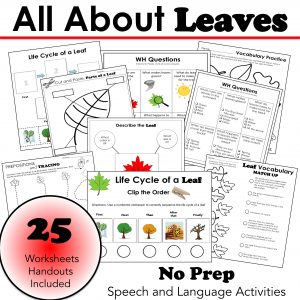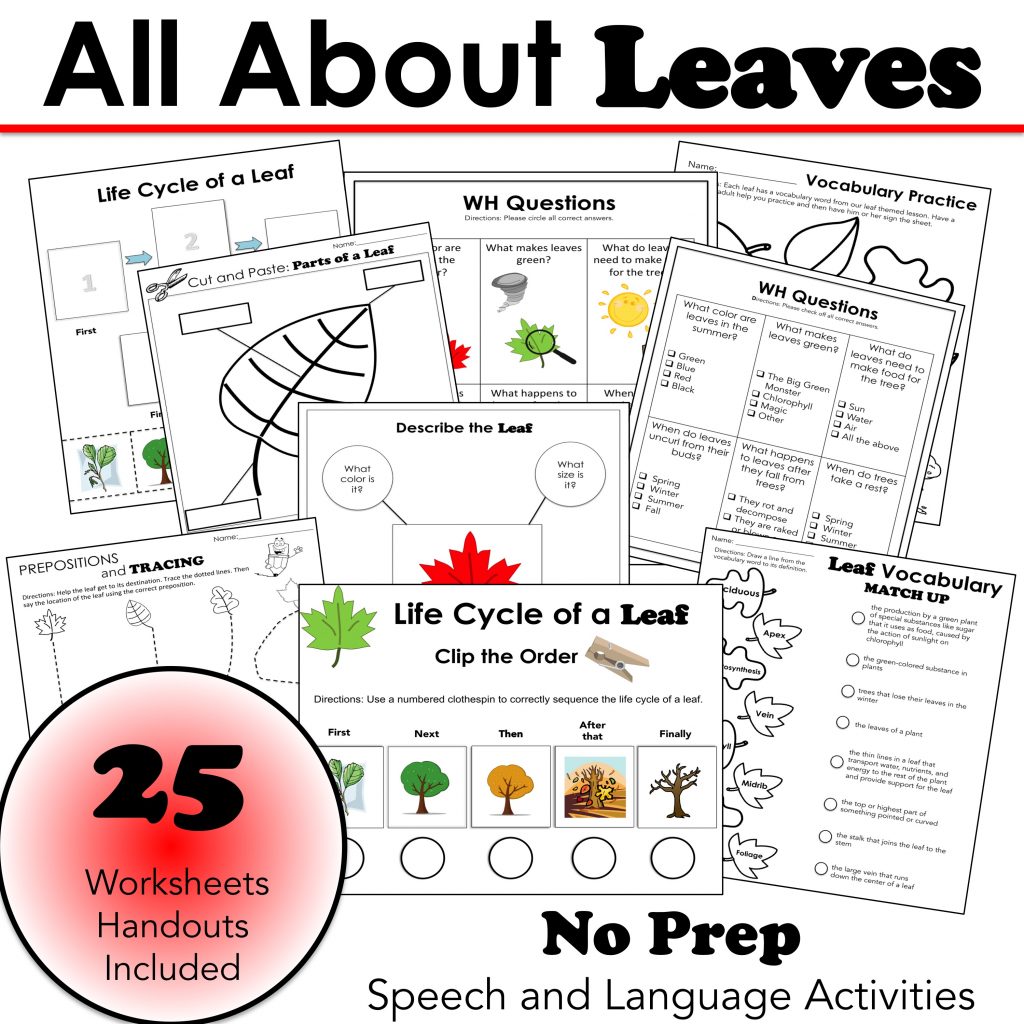Sign Up For Our E-Blast To Receive Information on our Books, Speech Therapy materials and our latest freebies!
Why Do Leaves Change Color? A Nonfiction Speech Therapy Packet
September marks the beginning of autumn. It’s a month of change and new beginnings for many. Children go back to school, the air becomes cooler, and berries and watermelons are replaced with apples and pumpkins. In the colder, mountainous areas, leaves begin to change color.
In addition to apple cider donuts and everything pumpkin, I love fall foliage!
With the change from summer to autumn, I adapt the materials I use in my private practice to coincide with the change in seasons. Summer picture books are replaced with fall picture books.
Last week, I had the opportunity to read the nonfiction book, Why Do Leaves Change Color? by Betsy Maestro, with several of my school age clients.
If you are wondering why I use nonfiction books in my therapy sessions, allow me to briefly explain.
Reading non-fiction or informational texts greatly enhances children’s background knowledge and this background knowledge significantly improves their comprehension and world knowledge. Furthermore, “Background knowledge becomes more crucial in the later elementary grades, as students begin to read more content-specific textbooks (Young, Moss, & Cornwell, 2007) that often include headings, graphs, charts, and other text elements not often found in the narrative fiction they encounter in lower grades (Sanacore & Palumbo, 2009) (Goodwin. B., & Miller, K., 2012).” Additionally, some children who are reluctant readers may in fact, find nonfiction more interesting than fiction. It may entice their curiosity and drive them to ask questions and search for the answers. And, since we learn lots of information from nonfiction texts, why not give our children every advantage?
These are just a few reasons why I like to incorporate some thematic nonfiction into my therapy sessions – because I want to give my clients every advantage to succeed and feel confident. This learning is all done in a fun and engaging manner. Remember, if it’s not fun and engaging, children will have a harder time retaining the information.
In addition to nonfiction books, I also incorporate fiction books as they relate to or compliment the theme of leaves (and autumn). Reading builds vocabulary. Books are a gentle yet effective way to introduce new words to children. One such book is the lovely picture book, Fletcher and the Falling Leaves by Julia Rawlinson.
During and after book reading, I target my client’s specific speech and language goals.
Since I carefully individualize my treatment sessions and often make materials to best meet the needs of my clients, I embarked on making some worksheets to reinforce my clients’ goals. So I created All About Leaves.
This print and go product now has 25 different worksheets, handouts, and activities that can be used digitally in teletherapy or printed for in-person sessions. The activities include vocabulary cards, vocabulary matching, cut and paste worksheets, preposition tracing worksheets, sorting activities, Venn diagrams to practice comparing and contrasting, wh-question worksheets, and MUCH MORE! There’s something for everyone in this unit, serving students from preschool to 3rd grade.
Have you ever contemplated the descriptive, scientific, and academic vocabulary associated with leaves? Maybe not, but it’s possible your child (or even yourself) has wondered what those bumpy tubes that run along the middle of leaves are called.
The vocabulary worksheets in my All About Leaves Unit provide student-friendly definitions and give opportunities to interact with leaf vocabulary.
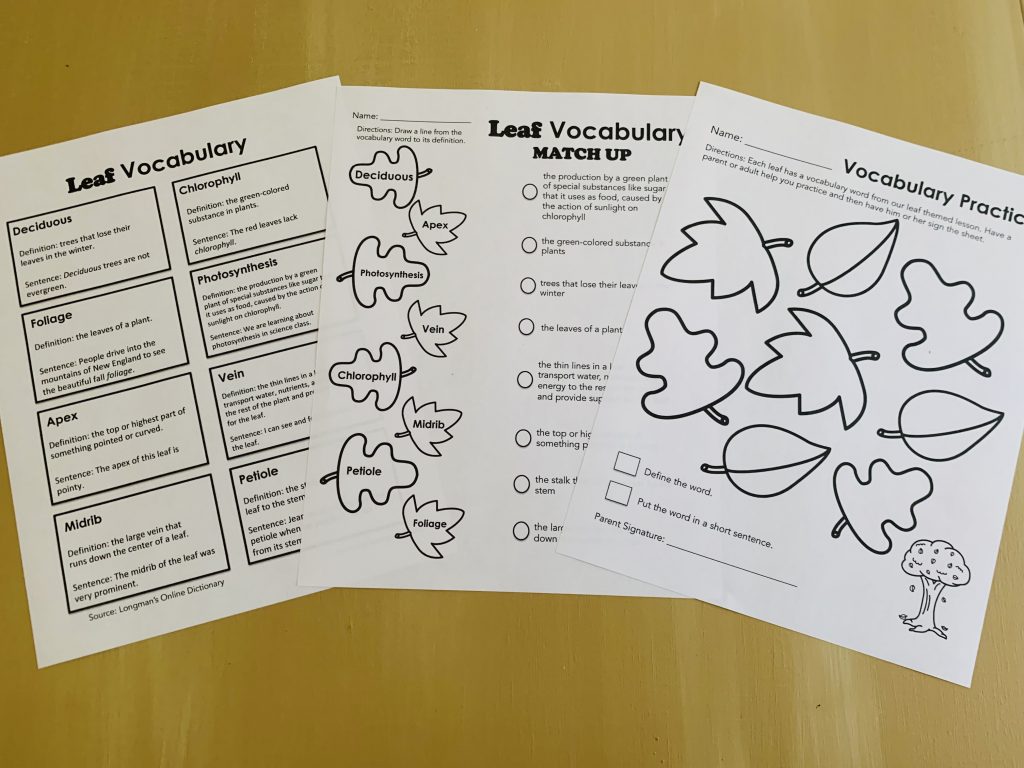
You can start by reading a book about leaves (like the ones I mentioned above) with your little one or student, and then learn fun facts about leaves! Go even further to reinforce fall vocabulary with this leaf vocabulary match-up worksheet.
These 5 colorful Describe the Leaf worksheets help teach students how to describe leaves in a systematic way. Encourage them to talk about what the leaf looks like, what size it is, or what color it is. Let them see how each leaf is beautiful and unique!
Venn Diagrams are visuals that show the relation between two or three items. These diagrams consist of two overlapping circles.
In the photo below, I wrote in the names of two different leaves (e.g. Oak vs Maple) but for younger children or more visual learners, consider showing two different leaves side-by-side so they can see and feel the leaves.
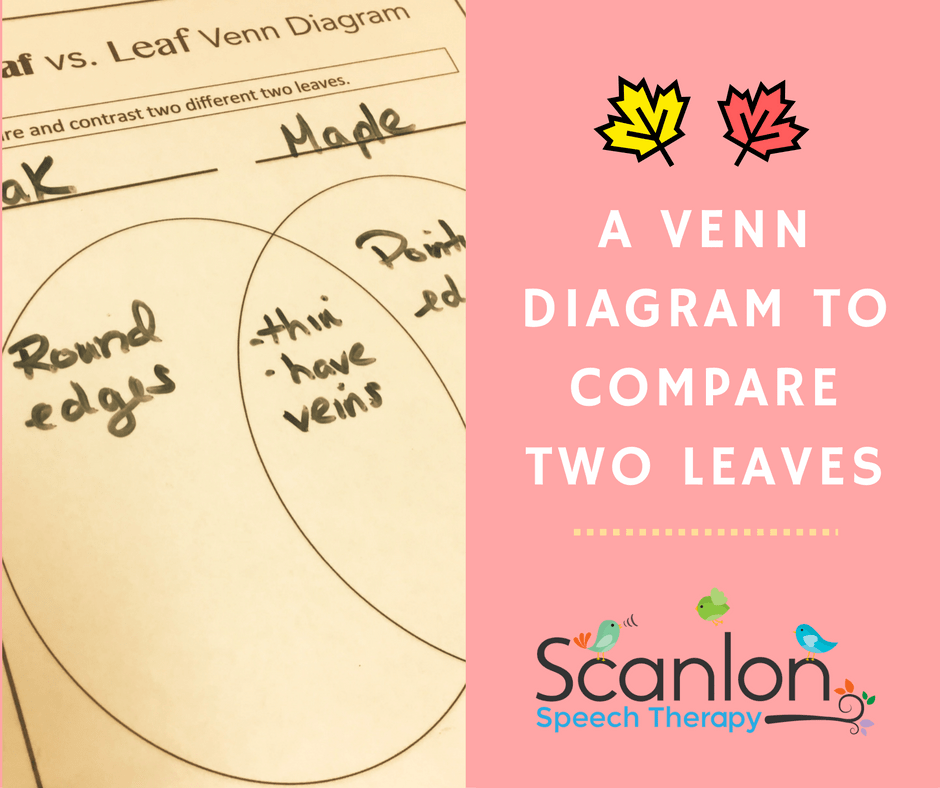
Appropriately answering questions is a necessary skill because doing so helps us navigate conversations and demonstrate acquired knowledge. The Wh-question worksheets in this Leaves unit allow children to practice answering questions and helps them relay information learned about leaves.
I wrote extensively about prepositions in my blog post A Step-By-Step Way to Teach Prepositions Target ….so I was inspired to create a leaf themed tracing worksheet to help younger students think about prepositions while practicing their fine motor skills.
There’s even more more worksheets and activities in this packet but I’ll end with the Life Cycle Story Map.
This story map helps my clients efficiently organize and sequence their thoughts. My goal is to have my clients eventually internalize such a template so they can use it to tell and retell stories or sequence thoughts in an organized fashion.
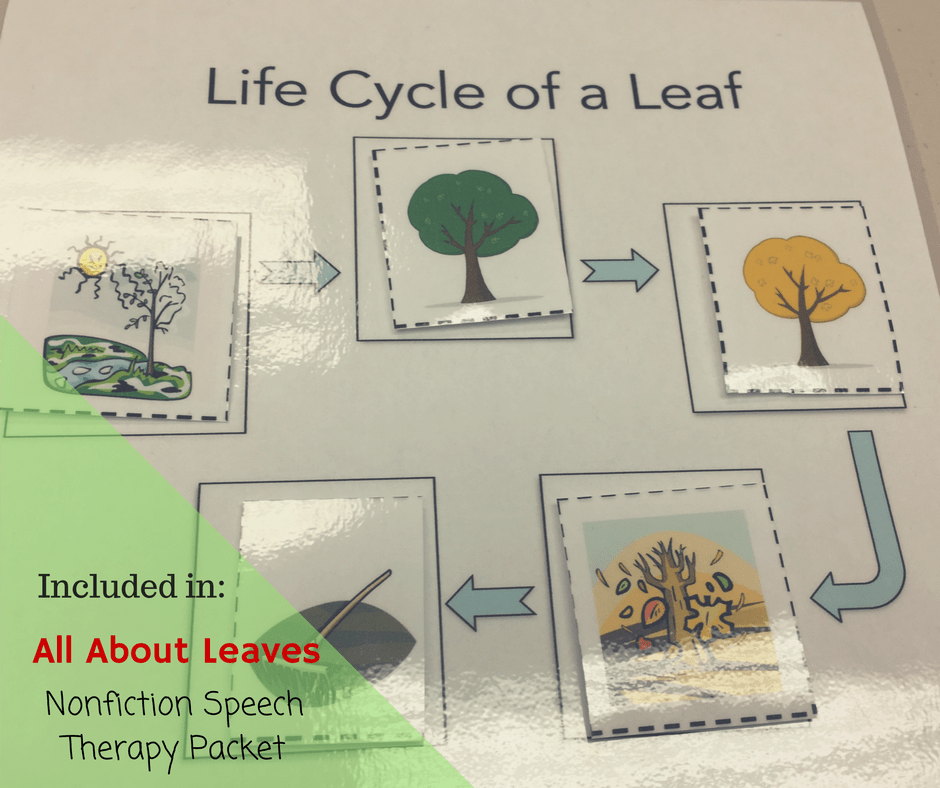
I hope these worksheets help your children, students, and clients.
Grab the Leaves Packet by clicking HERE!
References: Goodwin, B., & Miller, K. (2012, December). Research Says Nonfiction Reading Promotes Student Success. Educational Leadership, 70(4), 80-82. doi:http://www.ascd.org/publications/educational-leadership/dec12/vol70/num04/Nonfiction-Reading-Promotes-Student-Success.aspx
- Enhance Your Speech Therapy Sessions with ‘Picky Kitty’ – A Must-Have Game for Every Speech Therapist
- Same and Different: Why Speech Therapists and Educators Should Target this Basic Concept
- New Beginnings for Scanlon Speech Therapy
- Articulation Speech Therapy: Favorite Activities, Games, and Books to Target the TH Sounds
- Articulation Speech Therapy: Favorite Activities, Games and Books to Target the L Sound

